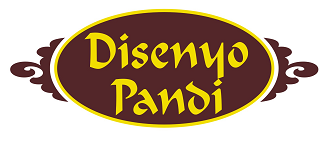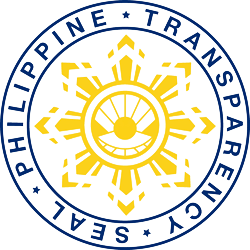Bagong Barrio was a typical poor barangay before the specialized gown and barong industry began. Way back in the sixties, most households there relied on farming as the primary source of income. Parents had a hard time sending their children to school resulting to a high illiteracy rate in the community. Children who should be studying in schools were already helping out in the rice fields. Farmers relied on loans called “takalanan” – in order to survive until the next planting season began. Life during those times was really difficult. The roads were unpaved and full of holes, the houses were small and mostly made up of wood and light materials that a strong gust of wind will send them flying away. Indeed, people from other barrios regard the inhabitants of Bagong Barrio as poor, uneducated and uncivilized. It was a near desperate situation, so most households sought different avenues to create another source of income and not depend on farming alone. One of these avenues is through embroidery. Almost every housewife learned and did embroidery as a way to augment the household income. In 1965, some enterprising housewives started engaging in the small scale business of making embroidered blouses, pillow cases, table cloth and dresses with handmaid calado and cutworks, which they sold at weekend markets. This enterprise proved to be a reliable source of additional income for the family so it began to proliferate. More households engaged in this type of business until they created other products that were also in demand at that time such as Kimona and Barong Tagalog.
A big boost to the industry came in 1996, when former President Fidel V. Ramos required all government employees to wear Filipiniana dress or Kimona and Barong Tagalog as part of the Philippine Centennial celebration. At that time, said products were selling like hotcakes. Even Chinese traders/wholesalers based in Manila could not wait for the delivery in their shops, they personally trooped to Pandi to get the finished barongs and kimonas before other buyers get to them first. The demand for specialized garments was so high that it resulted in increased selling prices and better profits for the manufacturers. The creative and entrepreneurial minds of the “farmer’s wives”, who are now certified business women, continue to evolve. With the help of their husbands and grown children, they then saw an opportunity to create their own designs of bridal gowns and other wedding entourage after seeing a market need for more affordable wedding attire. A new generation of “magpapatahi” began to multiply. The industry of the affordable gowns and Barong that cater to the mass market also sold materials which are cheaper but with good quality.
The BBMPC was established on September 08, 2002 with an initial capitalization of Php 1,050,000.00, with more than 200 members who are mostly engaged in the garments and textile industry. The members of the cooperative has grown from 200 to 854 over the years, employing more than 5,000 individuals.
Tight competition in the market pushed the cooperative to innovate its technology and divert from manual embroidery to a computerized method. BBMPC needed to outsource embroidery services in Laguna and Metro Manila to meet its demands. Income was not fully realized due to the high transportation costs and slow turnover of goods from the computerized embroidery service provider.
In 2013, BBMPC’s chairman Pelicula Rapanut found a light of hope with the DTI’s Shared Services Facility Project which was launched last August 13, 2014.
BBMPC-DISENYO PANDI
The officers and members of Bagong Barrio Multi-purpose Cooperative (BBMPC) played an important role in the development of the One Town One Product (OTOP) of Pandi. OTOP Pandi was formally organized during the BBMPC Chairmanship of Santiago Antonio and Danilo Rivera. This is also with the convergence of the efforts of the Local Government of Pandi and the Department of Trade and Industry – Bulacan. The Specialized Garment (Gowns & Barong) of Bagong Barrio was declared as the OTOP for the municipality. It was organized to help the garment manufacturers in the area. Most of the OTOP MSMEs are members of BBMPC.
 |
| The Disenyo Pandi Collective Mark Registered at Intellectual Property of the Philippines under Registration No. 4-2012-760017. |
Engaging in Credit, Savings and Textile trading is not that easy, but having a set of officers that focus in the success of the organization and dedicated staff makes everything possible. The core of the institution is the business operation. The management and staff’s day to day operation are guided by BBMPC’s well written policies.
AWARDS AND RECOGNITIONS
Bringing BBMPC to its present status is a great achievement. Receiving various awards and recognitions from different organizations/institutions is a bonus factor that makes every people behind BBMPC more enthusiastic and inspired to do more for BBMPC. Some of these significant awards and recognitions are:
| Year | Award/Recognition Received | Sponsor |
| 2016 | Gawad Parangal National Level | CDA |
| 2016 | Balikat ng Bayan Award | SSS |
| 2006-2010 | Natatanging Kooperatiba ng Bulacan | PGB |
| 2013 | Gawad Parangal 1st Placer | CDA |
| 2010 | National Level OTOP Winner | DTI |


